Tagged: winnipeg
Did a radio interview the other day
- by Alyson Shane
and when I was talking to the radio host he mentioned this 'lil blog here, and a couple of posts, specifically, and it threw me a bit because blogging is dead and also because most people these days know me from Twitter, or my business, or my TEDxWinnipeg talk
not the weird little blog I've been running for like a decade now that is actually just a continuation of a multitude of other blogs I've had over the years
because sometimes I forget that people I don't know still read this thing
so if that's you, hello!
and it reminded me that not only is this a place to share my thoughts about my city and the things that matter to me, but also to use it as a place to highlight some of the really cool and interesting things that I somehow wind up getting to do in this weirdly charmed life of mine
like this:
The other week I discovered one of the coolest gems in our city: the RTMF bike jam, which is actually a testament to how un-cool I actually am because this thing has been going for a few years now and I only just got around to going
(thanks Carlene for the reminder)
but holy hell guys are bike jams ever the best thing ever.
Not only does it involve one of the best activities ever - riding yr bike - but you get to do it as part iof a massive group of people who are all slightly buzzed, listening to music which is pumping from a bike with speakers attached to it, and riding super duper slow so you can take selfies and laugh at dumb jokes with yr friends.
We met at the muster point in Central Park before the jam kicked off and we met a dude whose name I forget, but he was riding a pink child's bike that said "Cream Soda" on it and was giving out handfuls of cotton candy
which was a bit soggy and gross from the humidity
but whatever
obviously we had some, and participated in yelling "CREAM SODAAAA" whenever he drove by and pumped his fist and yelled his bike jam chant because that's what one does when one is bike jamming.
Because when you attend weird, fun, interesting events you get to meet all the weird, fun, interesting people that make the place you live something special.
And take it from me: the RTMF bike jam is one of those things that makes Winnipeg really special.
Even though there was a vendor stop around midnight and we grabbed a few more road rockets John an I were exhausted by the time we got to the final party location which was some random side street in The Exchange District
where a DJ and a hot dog stand were waiting for all the partygoers
but instead of partying until dawn John and I rode our bikes to Johnny G's and devoured a plate of chicken fingers and shoestring fries before taking a slow, safe bike ride home
because life's about balance, after all..
Here's why I'm against the suburbs
- by Alyson Shane
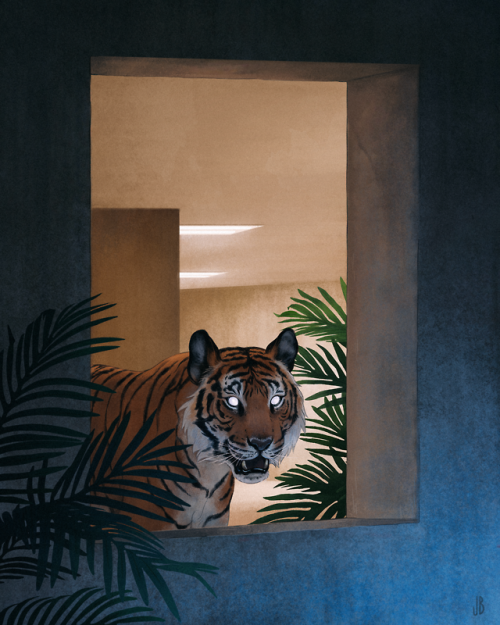 Yesterday I went on a bit of a tear in my Instagram Stories where I compared Wolseley (where I live) to the awful suburb where I spent most of my younger years.
Yesterday I went on a bit of a tear in my Instagram Stories where I compared Wolseley (where I live) to the awful suburb where I spent most of my younger years.
I pointed out some of the key differences that make my current, older neighbourhood a good place to live, and how the newer development I grew up in is a barren wasteland not designed for people, or community.
After I posted it a few people messaged me asking why I "hate the suburbs" because, hey! I live there, man. How dare you!
And since it doesn't seem like a lot of people have ever really stopped to think about why the lonely, winding, suburban, sprawling nightmare of a "neighbourhood" that my generation was raised to believe we should want
was even a thing we should want in the first place
and it doesn't seem like a lot of people have stopped to ask why a suburb like the one I just described above would be bad for us both individually and as a society
I posted a bunch of facts on my IG Story and it kinda blew up overnight, and a few people suggested that I re-share the facts I'd posted on my Story publicly online somewhere so they wouldn't be lost after 24 hours.
And, well, I have this little blog here
perfect for the handing out of fast facts and sharing of ideas.
So here they are, for reference:
----
Suburbs prioritize vehicles over people. Neighbourhoods built to facilitate driving (wide roads, no sidewalks) create a landscape that actively discourages people from using it on foot, bike, skateboard, whatever.
Suburbs are unsafe. Those winding roads sold as "safer" actually aren't; you're actually more likely to be in a motor vehicle accident in a suburb than in the city. (Source: "The Car and the City" by Alan Thein Durning.)
Suburban landscapes don't prioritize safe, efficient public transit. Those "safe" winding roads make it harder to design effective transit routes, and as a result even more people rely on vehicles vs. public transit, increasing the probability of a car hitting a pedestrian or cyclist. (Source: same as above.)
Suburbs are expensive to maintain. Continuing to spread outwards is expensive, and the money needed to build and support all of the infrastructure associated with suburban sprawl takes money away from other essential city services.
Suburbs don't facilitate mixed-use space. "Mixed-used space" is a blend of residential, commercial + other types of buildings. Traditional neighbourhoods (Wolseley, West Broadway, Fort Rouge, etc.) often have mini centres of commerce which facilitate easy socialization (important for human happiness.)
Suburban houses aren't built for people, they're built for cars. A "garage first" home puts the home, and the people who live in it, farther away from the street. The loss of the back lane and the resulting private, fenced backyard reduces opportunities to interact regularly with neighbours and other community members, making them feel less like connected communities.
Suburbs don't facilitate natural socialization. If the place you live requires you to get into a car to go to get groceries, or get a coffee, then it reduces the likelihood that you'll interacts with others in your community on a regular basis. This can make us mistrustful, anxious, and sad.
... so those are just SOME of the reasons why I'm "anti-suburb" and will continue to advocate for smarter city design, downtown living, and making choices as a society that keep us happy, healthy, and safe.
(Also: screw car culture.)
Thanks for reading!
P.S. Want some resources to learn more about healthy and sustainable urban design? Check out some of the reads that influenced my way of thinking:
The Death and Life of Great American Cities - Jane Jacobs
Geography Of Nowhere: The Rise And Decline of America's Man-Made Landscape - James Howard Kunstler
Cities and the Wealth of Nations: Principles of Economic Life - Jane Jacobs
Circulation and the City: Essays on Urban Culture - Alexandra Boutros and Will Straw
This post went in a weird direction
- by Alyson Shane
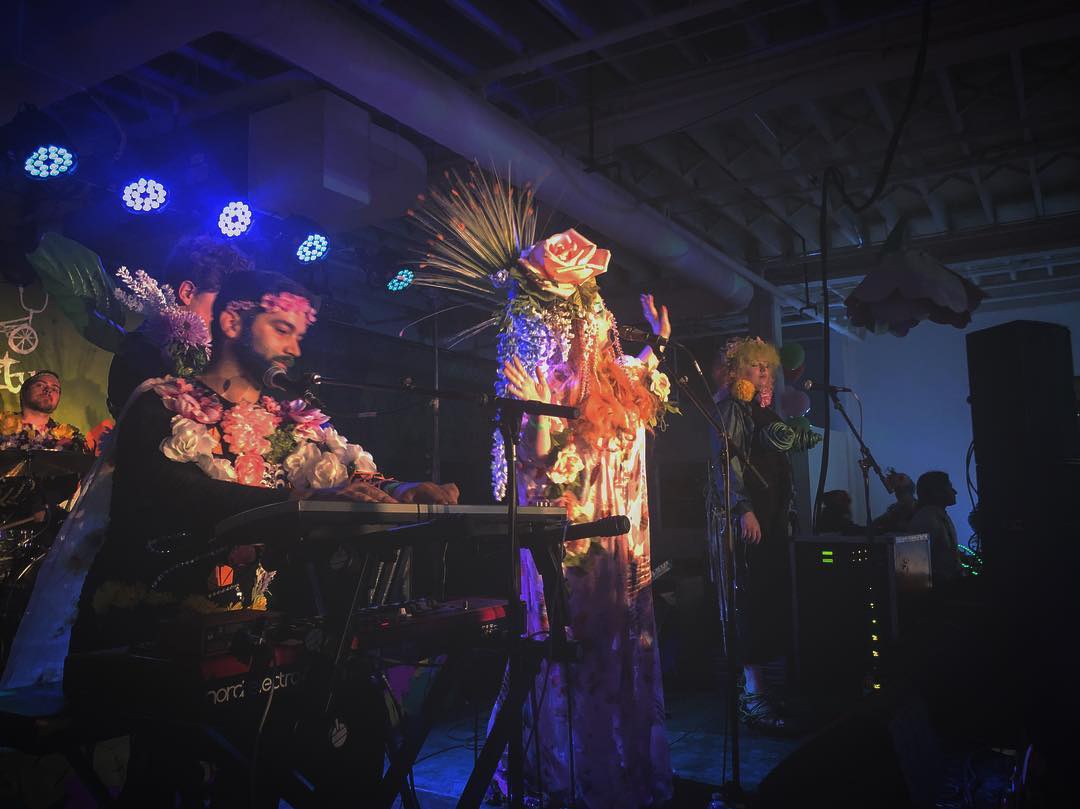
On Saturday we went to Mega Flora, the annual fundraiser for Art City
which if you aren't from Winnipeg is a really very cool nonprofit that makes a very positive and important impact on our community in a big way
(it's also the coolest-looking building for miles so check it out)
it was in The Exchange District in this old warehouse decorated to the nines with flowers and leaves and grass and so much crepe paper. There were food trucks outside and craft beer and cocktails inside. There was a photo booth. There were amazing bands and Begonia wore a giant flower on her head. There was a huge craft table to keep all the drunk people busy. Everyone dressed up in their most flowery outfits and it was just fucking magical
and like a lot of events happening in my city lately I was blown away at how much my city
turned.
it.
out.
which is still a weird feeling tbh.
Because longtime readers of this blog will remember that back in my late teens and early 20's I was pretty insufferable about wanting to move the hell out of Winnipeg
to Toronto, preferably
and would recite the same tired old refrain that I'd been hearing from basically every adult around me my entire life:
"Winnipeg is a dump and the best thing you can do is move away and never come back."
Seriously. People say that about the place they live
and where they continue to live, which is just that more confusing because why would you live somewhere you hate
especially if you're a Gen X or a Boomer and you say stuff like that. Seriously. Why do you still live here, then? Go away already and let us "lazy" Millennials re-open Portage and Main, revamp our public transit, and install some goddamn protected bike lanes on Portage Avenue
and keep starting small businesses and volunteering for nonprofits and throwing omg so much time and money into a fundraiser for a nonprofit that most of us have probably never used just because we see the value that nonprofits like Art City bring to our communities.
Because clearly we're not stopping anytime soon.
... omg guys I think I just figured out what's making Winnipeg a hip place to be:
Millennials.
Most of our coolest local shops and startups are owned by: Millennials.
The majority of the innovation in our tech sector is being built by: Millennials.
Most of the hottest events and fundraisers are hosted by: Millennials.
The coolest local festivals are being started by: Millennials.
You get my point. Winnipeg is becoming sosososo great, and it's largely because of the Millennials who live here.
I mean, of course all the work isn't 100% Millennial-driven. I know lots of Gen X and Boomer-types who do a great job of helping our city become something amazing, and props to them.
But it's kinda crazy to live in a city that seems to be undergoing some sort of cultural renaissance and to be a part of the generation that's driving that positive change in a really meaningful way.
It's almost as if a generation of us grew up being told that the place we lived sucked, and by extension if we chose to stay there instead of moving away we also sucked, and instead we decided "fuck that" and decided to make the place we live not-suck instead.
Thinking emoji.
Now if only some of us young social democrats would run for political office and fix our damn provincial health care.
Not me, of course. As much as I love politics I also don't have that kind of chutzpah
but maybe you could?
Pop-up tree shop
- by Alyson Shane

There's a pop-up Christmas Tree store down the street from my house.
It's next to the convenience store that I never go into, which is attached to a hair salon which is also offers sensory deprivation tank experiences
(a strange combo, if you ask me)
and 1958, which has one of the best breakfast bennies of all time.
I saw them putting it up the other day as I walked by on the way to a meeting
It's so hip and beautiful.
All greenery, gorgeous old wood, hay bails, and charming string lights.
One thing about us Millennials I've noticed is that some of us have, like, crazy-good style.
Maybe that's what happens when you spend all your time scrolling through highly-curated Instagram feeds. Maybe become hip by osmosis.
A few days ago I was sitting sitting next to the window at my favorite used bookstore and cafe and all these families from the neighborhood keep walking by as I'm sitting there with my London Fog.
Parents in big vintage jackets and lots of plaid. Fur-lined hoods. Cute kids in little knit scarves and hats. Dogs of all shapes and sizes. Everyone's bundled up, smiling and having a good time.
On second thought, maybe it's just that Canadians are hip af.
There's a coffee shop in my neighbourhood
- by Alyson Shane

(image via Simone Noronha)
called The Neighbourhood Bookstore and Cafe.
Which is such a charming name I can't even.
I hang out here a lot since it's right in my 'hood, and all the walls are lined with books and I think better when I'm around books.
They sell good coffee, board games, used books, and little sandwiches and snacks and bananas. Their London Fogs are pretty stellar, too.
There's this little patio-style area next to it where they put out tables and chairs and fairy lights, and there's often live music there in the evenings, and sometimes inside, too.
Book clubs and student groups and writers circles meet here on a regular basis and it's about as perfect and quaint as one would hope a neighbourhood coffee shop to be.
And it's almost always packed, too.
Which makes me happy, because for a while it didn't look like the The Neighbourhood Bookstore and Cafe was going to stick around.
The city was trying to enforce a bylaw that requires restaurants to have grease traps installed, and since all they make here are sandwiches and deserts (not exactly "restaurant" food) the owner was fighting it in court on the basis that installing one was an unnecessary and unreasonable expense for his business.
I think they fought it a bunch of years, actually.
And shortly after I moved into Wolseley The Neighbourhood Bookstore and Cafe started having weird hours, and then closed for a period of several months.
It broke my damn heart because the reason I live in the part of town I do is because I love the small businesses and mixed-use space
(not to mention the big, old elm trees)
Small businesses are the heart of our economies and communities, and it always saddens me when I think we're going to be losing one - especially for such an unnecessary reason.
But then earlier this year it reopened! The news reported that then owner had come to some sort of deal with the city that allowed him to reopen.
The old, familiar whiteboard started popping up on the side of the building, saying:
"We are unequivocally, unabashedly, open!"
And though I try not to blow all my money on fancy coffees, London Fogs, and nice snacks
sometimes it's nice to come back here and listen to the chatter of a bunch of people having a good time,
listening to The Tragically Hip, writing this.
Hit up the Third + Bird Christmas Market yesterday
- by Alyson Shane
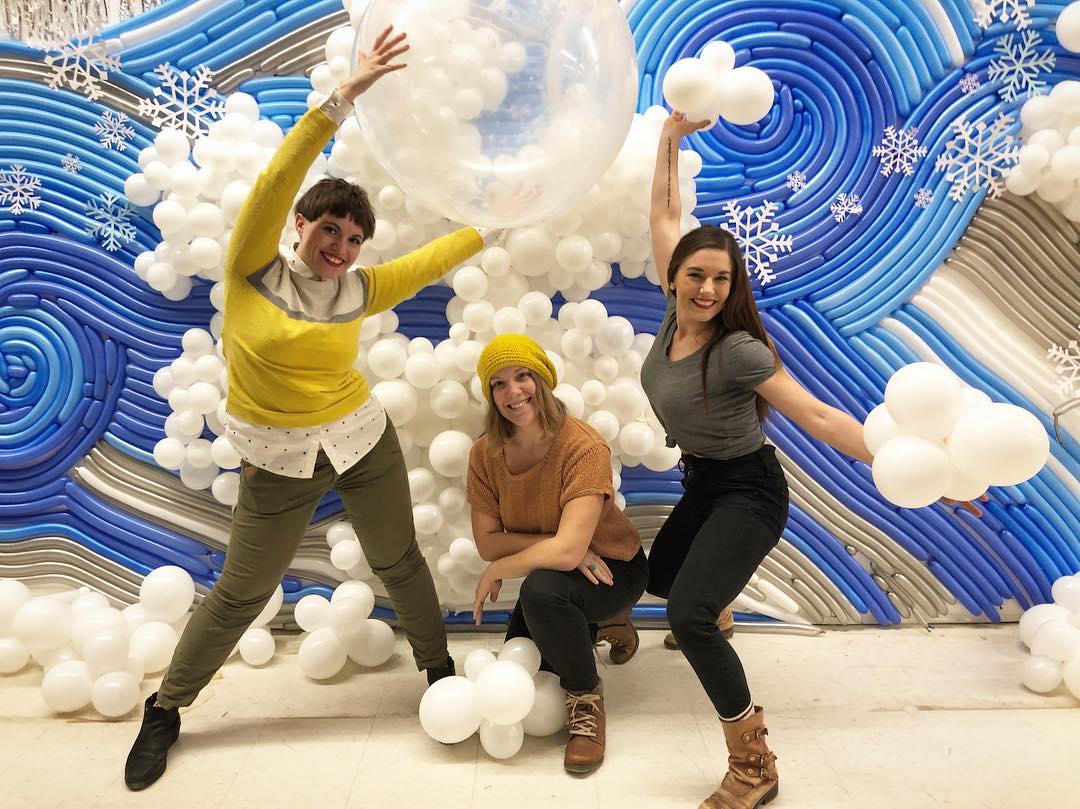
I went with Carlene and Katrina yesterday and bought too many things including honey, art, and a large air plant.
Mostly art though, and most of it is 204-related.
Which was an accident, I swear, but served as a really strong reminder of how into my city I've become over the last few years. I'm proud of it, in a weird way. When I go to events like Third + Bird and see all these local vendors selling items made with love and effort and the outpouring of support from the community it really just fills up my old grinch heart.
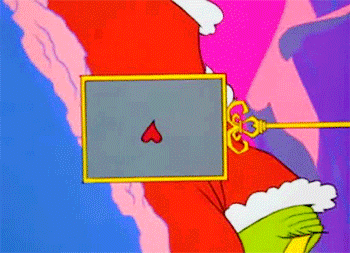
If you're curious where I spent all my dollars I recommend checking out Cree Ryan, Bearface General Store, Beeproject Apiaries, and Happyland Print Shop.
Later in the evening we went out with one of John's friends to Ye's Buffet and I inhaled way too many chicken balls with plum sauce, and gave myself a stomach ache from the too-big bowl of vanilla ice cream with chocolate and caramel syrup.
I can't be a trendy hipster all the time, y'know?
In My Community: Gracie at the Prairie Theatre Exchange
- by Alyson Shane
I have a confession: I'm a little obsessed with The Church of Jesus Christ of Latter-Day Saints and its polygamous culture. Weird, I know, but bear with me.
I grew up in a largely unreligious household; I somewhat recall my mom mentioning Sunday School to me when I was a kid, but her big selling point was hot dog days and camping trips, not a deep, personal connection with some higher power. In fact, the closest I remember getting to any sort of organized religion growing up was seeing The Church of Jesus Christ of Latter-Day Saints (LDS) commercials on the American cable networks.
Partially as a result, I now identify as an Atheist, but that hasn't stopped me from developing a weird obsession with religion, especially the more "fringe" versions of beliefs like Christianity like the Mormon LDS faith. It started with Mitt Romney, the 2012 Republican Presidential nominee who apparently wore magic underwear, and became exacerbated when I started watching the HBO show Big Love, a fictional narrative about an LDS polygamist and his three wives.
I'm fascinated by sub-cultures, so it probably comes as no surprise that I was thrilled to discover that Gracie, the first play in the Prairie Theatre Exchange's new season, is all about Mormons and polygamous relationships.
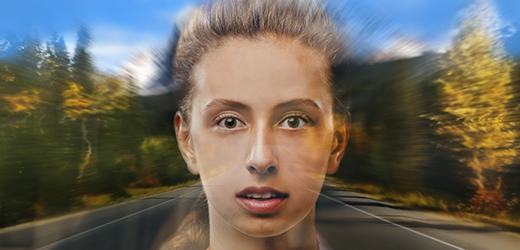
The Play
At it's core, 'Gracie' is a play about self-discovery, rejection, and acceptance. Written by playwright Joan MacLeod, it follows a young girl from the LDS church as her family moves from America to Canada to live on a polygamous compound in British Columbia.
When we first meet Gracie (played by the incredible Samantha Hill) she's eight years old, sitting in a van with her mother and siblings on her way to their new life in Canada. Her mother is getting married, and when they arrive in their new community they're greeted by a group of individuals: boys on bikes, teenage girls carrying their babies, and her mother's new husband, to whom she will be the 18th wife.
(Please excuse me while I shudder for a moment)
During this introduction Gracie meets a young girl named Allie, and they become fast friends, and throughout the course of the play Gracie grows up right before our eyes. By the second act, which takes place four years later, Gracie and Allie are practicing for the exaltation. At school, Gracie bemoans the fact that she has to learn arithmetic in addition to other subjects like English, "science" and "social studies" where half the class studies Jesus Christ and the other studies Joseph Smith, the founder of the Mormon faith.
During this time Gracie's brother gets a job, and her sisters are both married off and begin having children with their assigned husbands. At this point, during the final segment of the play, Gracie is about to turn 16 - marrying age in her community.
During this time Gracie struggles with her changing feelings about her beliefs, culture, and circumstances, and this one-woman play quickly transforms from charming-yet-unnerving overview of a religious subculture to a moving and powerful story about the complex private lives of LDS women which we rarely see beyond TV shows or court testimonials.
Exploring Perspectives
One of the things that struck me about 'Gracie' was how MacLeod used to play to explore uncomfortable subjects like polygamy, religion, and alternative lifestyles and beliefs in a way which felt nonjudgemental; in fact, the play often felt more like a serving of reality than a heavily-researched theatre production.
As a non-religious person I find it's often all-too-easy to dismiss the complex, three-dimensional experiences of women raised in the LDS church. It's easy to say: if it's so bad, why not leave? but plays like Gracie do a tremendous job of reminding us that everyone is an individual with complex, nuanced views and experiences.
One moment which struck me was when Gracie refers to the 'grannies', groups of older women who protest outside the LDS compound with picket signs, outraged at what they perceive to the atrocities being committed within the community:
"They don't like the way we live even though they know nothing about us," Gracie says.
Complicated Positions
As a non-religious person, I often struggle to understand the appeal and value of religious beliefs, and I appreciated watching a performance which didn't pander to my preconceived notions about the LDS church and polygamy in general.
In fact, the play was so well-written that Gracie's experiences, interpretations, and reactions to the events happening to her family and within her community felt more like reading a young girl's diary than a fictional exploration of an unusual religious subculture.
Though I often felt gut-based reactions to certain experiences (such as her mother being someone's 18th wife, and all of the ways it aggravates and upsets my 3rd wave feminist views of the world), MacLeod does a tremendously good job of exploring Gracie's world in ways which feel authentic and realistic, without the bombast which often accompanies literary works which explore religious subcultures.
Evoking Empathy
If anything Gracie acts as a terrific opportunity to explore a secretive, unusual religious subculture without feeling like a voyeur. While the play presents a myriad of uncomfortable and unusual situations that the modern girl (religious or not) doesn't experience, it does so without judgment; it really does feel like a honest, authentic exploration of one girl's perspective on a community which initially makes sense, but which ultimately she (and we) fail to understand and accept.
Gracie runs at the Prairie Theatre Exchange until October 29th, and I highly recommend catching it before it's gone. Not only is it a tremendously good play, but it's a fascinating and highly entertaining exploration of a lesser-known religious subculture.
TEDxWinnipeg photo essay
- by Alyson Shane
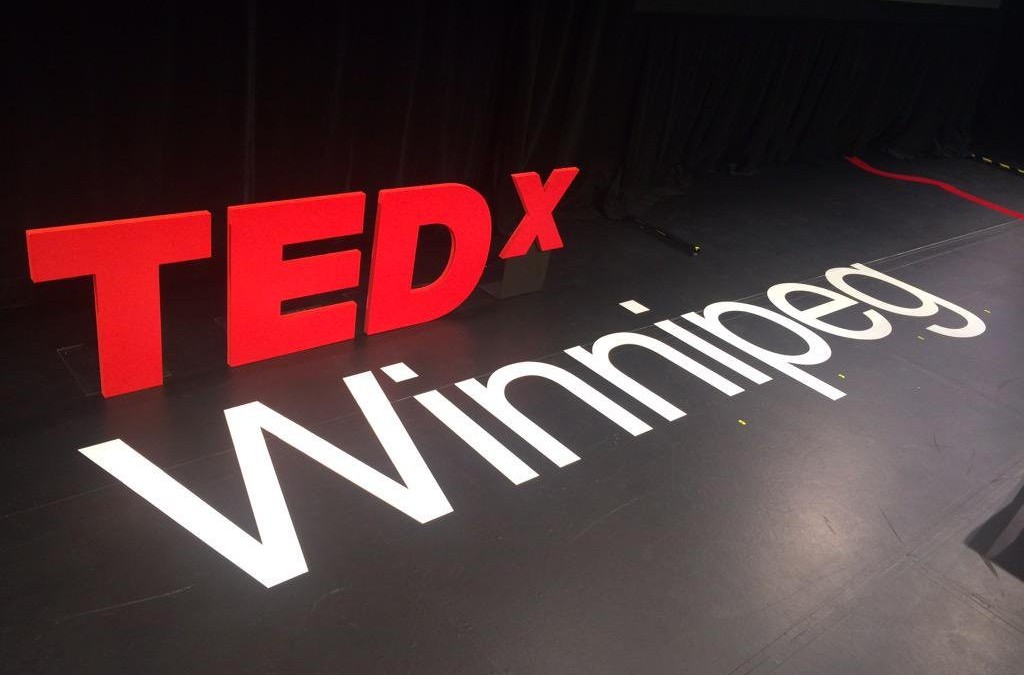
Yesterday was TEDxWinnipeg.
It was amazing. It was a whirlwind. It was so much more than my tired, fried-out brain can describe right now.
Instead, here's a photo essay:

Of course I woke up at 4:45AM
a full hour before my alarm was supposed to go off
as evidenced by my unimpressed post-shower face (was I even awake then?)

Much better.
Does that look like the face of a girl who got 5hrs sleep? I hope not.
Luckily I was able to pull myself together within a reasonable time frame.

Winnipeg looked gorgeous during my bike ride to the convention centre, of course.
I left a bit early so I could bike there slowly and collect my thoughts and feelings
and to try and get in a little "me time" before a whirlwind day.
I got there for 7:15AM and the space was largely empty except for the volunteers and organizers running around getting everything ready.
We took a bunch of group shots of all the speakers, organizers, tech peeps, and etc before the crowds started milling in, and then it was ready to go!


There were a bunch of fun activities for guests to do, including this fun board which I kept coming back to look at throughout the day.
I was busy as heck, but I managed to squeeze in a few selfies with some lovely people before the day got started.

TEDxWinnipeg people unite!
That's me with Ed, Mike, and Dr. Joel above, and Rana and I below:


This guy was an amazing support, of course.
Halfway through the morning Brent pulled me aside to let me know he had something for me:
It was a vintage AOL trial disc! Anyone remember these?
My talk touched on my high school years spent using the "Trial" button on our NetZero install because my parents refused to pay to get dial-up internet at home (don't even get me started on that gong show), so this little trinket was super thoughtful and hilarious. Thanks so much, Brent!
(Side note: I'm so thankful for high speed internet)
Then it was back into the swing of things.
I spent most of my day with two of my fellow presenters, Jon and Andrea, hanging out, watching the talks, rehearsing together, and trying not to be too nervous about everything.
I spent a lot of time in the green room backstage, but I made sure to make it into the crowd for Jon and Rana's talks. We'd spent so much time rehearsing together that I really needed to be in the crowd to experience their talks.
Spoiler alert: they both knocked it out of the park. I was in tears!
Before I knew it, it was my turn to present.
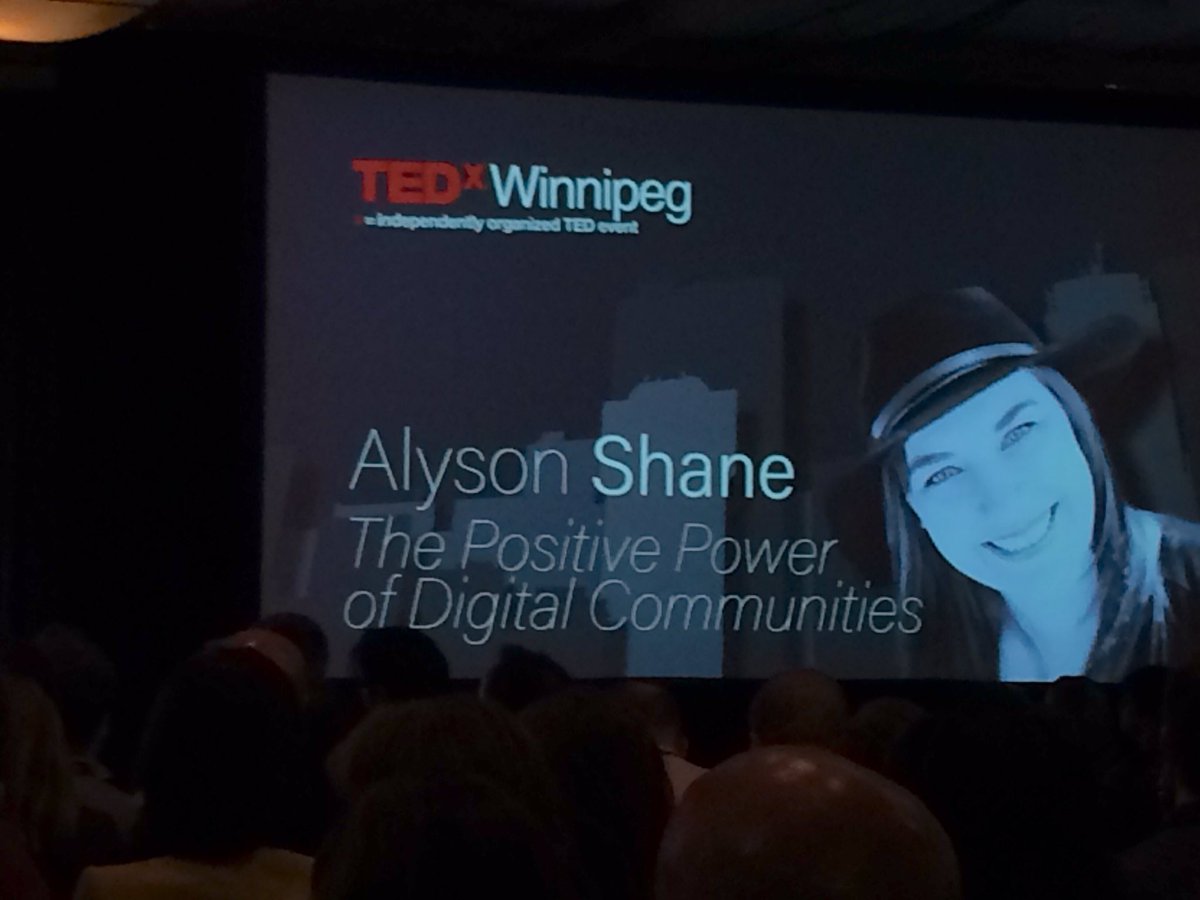

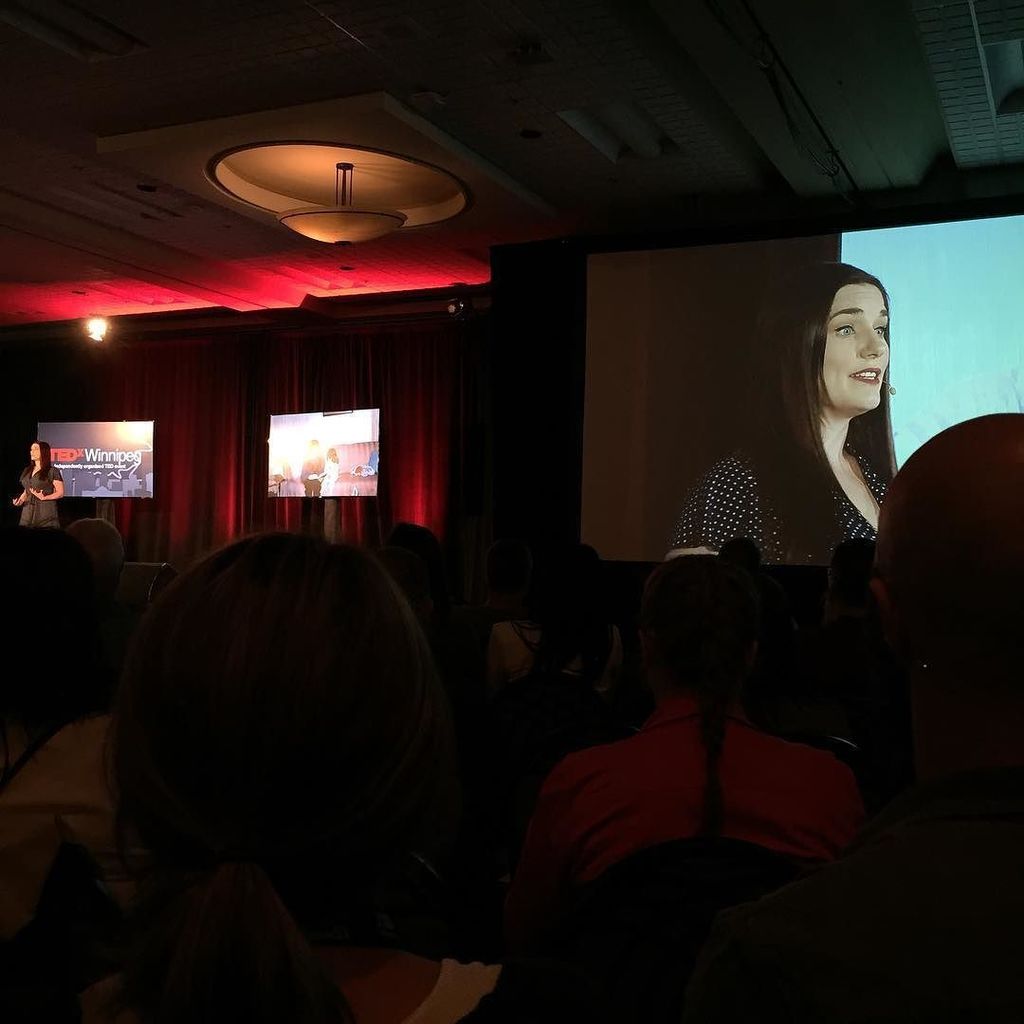
Photos via Heather Hinam, Doug McArthur, and The Winnipeg Chamber of Commerce.
What can I say about speaking?
It was intense. It was exhilarating. It was fun and stressful and amazing.
I was nervous leading up to my talk and was so worried that I was going to forget something, or flub my lines, or, well... anything!
But I'm pleased to say that I nailed it. I did better than I could have expected and I'll be sharing more thoughts on my experience in an upcoming post for the TEDxWinnipeg website (so stay tuned for that).

Then it was over!
I posed for a few quick snaps at the end of the day (this is my speaker buddy, Amanda, who was an incredible help and support throughout the entire process) before heading out.
I was utterly wiped after such an emotional, busy, and exhilarating day.

(But not too tired to go for pizza and drinks at my favourite local pizza joint Super Deluxe Pizza.)
Now if you'll excuse me I need to go and sleep for a week.
Want more info about my TEDxWinnipeg expeirence? Check out my blog post series on the TEDxWinnipeg website what it was like to be selected as a speaker, and preparing to present my talk.
Update: the TEDxWinnipeg live stream is still up! My talk is around 3:20:10 in the 'Afternoon Talks' section.
My TEDx Speaking Experience, Part I
- by Alyson Shane
 (Image via TEDxWinnipeg)
(Image via TEDxWinnipeg)
Recently I announced that I had been selected as a speaker at this year's TEDxWinnipeg event. This was amazing news to share, but prior to applying to speak I had a lot of unanswered questions:
What was the application process like?
What would happen if I was selected as a speaker?
How would I prepare to deliver my talk in front of a room full of hundreds of people?
What kinds of supports were in place to help me hone my talk and meet TEDx standards?
... and so on. The questions seemed endless.
With this in mind, I was thrilled when the TEDxWinnipeg social team contacted me and asked if I'd be interested in a series of posts about my experience. As a writer and a advocate of knowledge-sharing, this felt like the perfect opportunity to share what I'm learning as I go through this process, as well as the challenges and hurdles come with being selected to speak at a TEDx event.
Below is an exert from my first post in the series:
I’m a writer, and I own a digital marketing agency, so I spend a lot of time thinking about how people interact online. I’ve also been deeply influenced by the people I’ve met online throughout my life, and wanted to speak to those experiences and share them with the audience.
That being said, a good talk isn’t just about telling your own story; it’s about sharing information and ideas with your audience, so I made sure that my talk also focused on the positive power of digital communities in broader, less personal examples, as well. Because while a compelling story is great, a good TEDx talk needs to also introduce an idea or concept, because the talks are about sharing ideas, not just stories.
Check out the rest of my blog post about being a TEDxWinnipeg speaker here.
Elle at the PTE
- by Alyson Shane
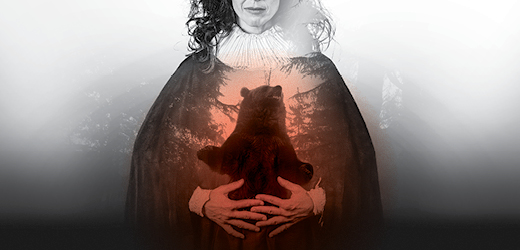
There are few things as powerful as a strong one-person performance, and while Severn Thompson's performance in Elle wasn't completely solo, the 90 minutes that she spent on the stage, almost entirely on her own, were appropriately gripping and moving.
Exploring French-Canadian History
Elle is a theatre adaptation of the Douglas Glover’s 2003 novel of the same name which is currently playing at the Prairie Theatre Exchange. The story focuses on the tale of harrowing survival in pre-colonial Canada, and weaves in themes of feminism, magic, and terror into a gripping performance that demands to be seen.
The play, and the novel upon which the play is based, are an interpretation and expansion of the incredible story of Marguerite de La Rocque de Roberval, played by Severn Thompson, a French noblewoman who travelled to Canada and was marooned on the Isle of Demons, a phantom island, an island off the coast of Newfoundland. She was marooned by the captain of the ship, her relative, who dumped her overboard as punishment for taking a lover during the voyage.
Marguerite is joined by her lover Richard, her maid Damienne, and a boat full of broken tools. Discovering that she is pregnant, she struggles through a series of hardships as her pregnancy progresses: Richard becomes ill and dies; Damienne, too, eventually succumbs to starvation and sickness, and, pregnant and alone, Marguerite's spirit begins to break.
A character who began as a confident and aloof young woman is suddenly left to face the harsh Canadian winters alone, and Thomson's portrayal of a woman whose spirit is breaking in front of you is chilling take on dark humour, to say the very least. As she climbs inside the skin of a bear, worn-out, cold, and ready to give up, she is discovered.
Itslk, played by Johnathan Fisher, is an Indigenous hunter who believes that Marguerite is a spirit, having watched her emerge from inside the bear. He teaches her how to hunt and cook meat, and the real and spirit world begin to blend as Marguerite becomes more in touch with her newfound home.
Intimate and Gripping
Being the sole (or largely solo) actor on stage can be daunting, and often falls flat, but Thompson's depiction of a woman going through a traumatic experience and surviving managed to be both alarming and darkly funny. At times, when Thompson is describing their dire state on the island, living off of “books, bird bones and tennis balls” you almost feel bad for laughing as she trounces around the stage.
The most striking part of the performance, however, was how the stage was integrated with the story. The entire play takes place in front of a large structure which resembles a rib cage (an homage to the bear Marguerite finds, perhaps?) and is the perfect play to see at the Prairie Theatre Exchange because of the smaller stage size and the intimate setting.
By using a long sheet and wrapping it in various ways around the structure the stage is transformed from a ship, to a tiny tent, to the belly of a bear, and more. At one point, while Thompson wound herself up inside the sheet, crying out, it could almost be believed that she was truly losing her sanity.
Elle is a play worth seeing, and a reminder of the hardships that faced both colonists and Indigenous peoples alike all those centuries ago.
